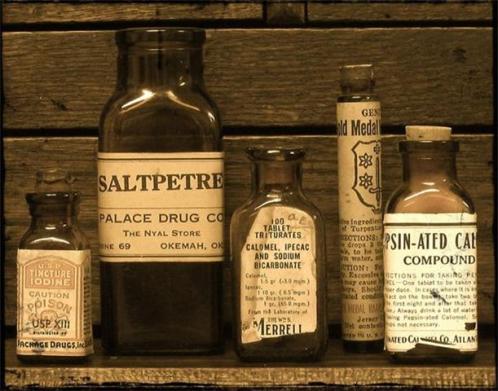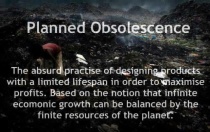I have written on planned obsolescence in four posts here in the last couple of years. You can put ‘planned obsolescence’ in the dinky little search box on the title bar to find them.
Principally, planned obsolescence is designing objects and appliances to wear out and stop working at a predetermined time so that you will be forced to buy a new one. Products that last a lifetime are not good for manufacturers who want to sell more.
But while planned obsolescence refers to technical goods and household appliances, does it go further?
From my personal experience.
I have two recent examples, first a couple of years ago I bought two sheets for my bed. Yesterday, I noticed a frayed tear in one of them, which was joined by another tear this morning.
Okay, the sheet has had it.
Now trotting back more than a few years. My mother bought sheets at the time she got married, those sheets were still being used on her silver wedding anniversary, 25 years later, and possibly longer, I don’t know the story beyond that.
Now I look at what is the difference?
One, my mother’s sheets were probably made in New Zealand and my sheets may have been made in Brazil, or imported from the likes of India or China. Now it is evident that the quality of the two lots of sheets is remarkably different. Is it due to planned obsolescence through the use of inferior materials and/or manufacturing methods, or simply that the third world countries make shittier products?
My second example is about socks.
In 1996 I bought three pair of socks in New Zealand before I returned to Brazil. I was still using those same socks twelve years later, and that would have been longer if my house hadn’t burned down resulting in their loss.
Brazilian socks on the other hand develop their first holes after six months. I have never had a pair of Brazilian socks that has gone beyond this time.
Once again, I ask, is this planned obsolescence through inferior materials and/or manufacture, or simply the third world problem again?
Or are the two problems partly linked?
Is this planned obsolescence creeping into every aspect of our lives?
This constant buying of and replacing goods through the loss due to planned obsolescence is a major drain on our financial resources which has resulted in the middle classes having less disposable income. We have less spending power.
We must also make the link to consumerism. I am using a cellphone that was made five plus years ago, now that is a long time. I am under no illusion that it will cease to work sometime in the near future. I also have friends who have had their more recent models break down in less time than I have had mine, resulting in them buying a newer model with more features.
This has lead to consumerism, where they have begun to buy newer models simply for the newer features, rather than their original unit breaking down.
As a society, we have got to fight back. We have got to face this consumerism head on and refuse to succumb to it; because this has the spin off of depleting the planet’s resources, faster.
Think about this. Have you had non-technical household products that have not lasted as long as you expected?
























Posted by smallftprints on February 14, 2014 at 10:11 pm
One of the more dramatic forms of planned obsolescence, and one of the most insidious, is the use of GMO seeds. Most plants grown from these seeds cannot produce seeds … that ability is genetically engineered out of them so one cannot save seeds for future crops. Monsanto effectively used planned obsolescence to hijack our plant-based food supply.
One of my pet peeves is the planned obsolescence of computers (and software) … one spends a great deal of money on a new computer which is typically out of date by the time we get it out of the box. While it might be argued that technology is improving faster than computers can be made, I tend to think that if they really wanted to, they could give us the ability to update our systems easily and inexpensively. Unfortunately, that wouldn’t improve their “bottom line” quite as much.
LikeLike
Posted by argentumvulgaris on February 16, 2014 at 7:29 am
>Small, I hadn’t touched on GMO seeds, because that is another subject, but true, it is a form of planned obsolescence.
‘easily and inexpensively’ don’t make profits.
AV
LikeLike
Posted by Isaac Yuen on February 16, 2014 at 3:12 pm
I think planned obsolescence is a bit of everything – automated processes, inferior materials, intended design, shoddy work in favour of speed and volume. In order to churn out the sheer amount of stuff that’s out there, quality must suffer.
LikeLike
Posted by argentumvulgaris on February 16, 2014 at 4:12 pm
>Issac, all those factors are involved, agreed. But I am alluding to the more sinister… is some of it actually planned? Not just an accumulation of peripheral circumstances. Certainly with tech products it is deliberately planned, and in some cases design and articluated in law. The light bulb example is perfect to demonstrate this; they cannot be allowed to burn for more than 10,000 hours, whereas in 1909 they were capable of making a light bulb that has burned continuously until today, how many thousands of hours is that? It is more nefarious than the average person knows, or is prepared to admit.
AV
LikeLike